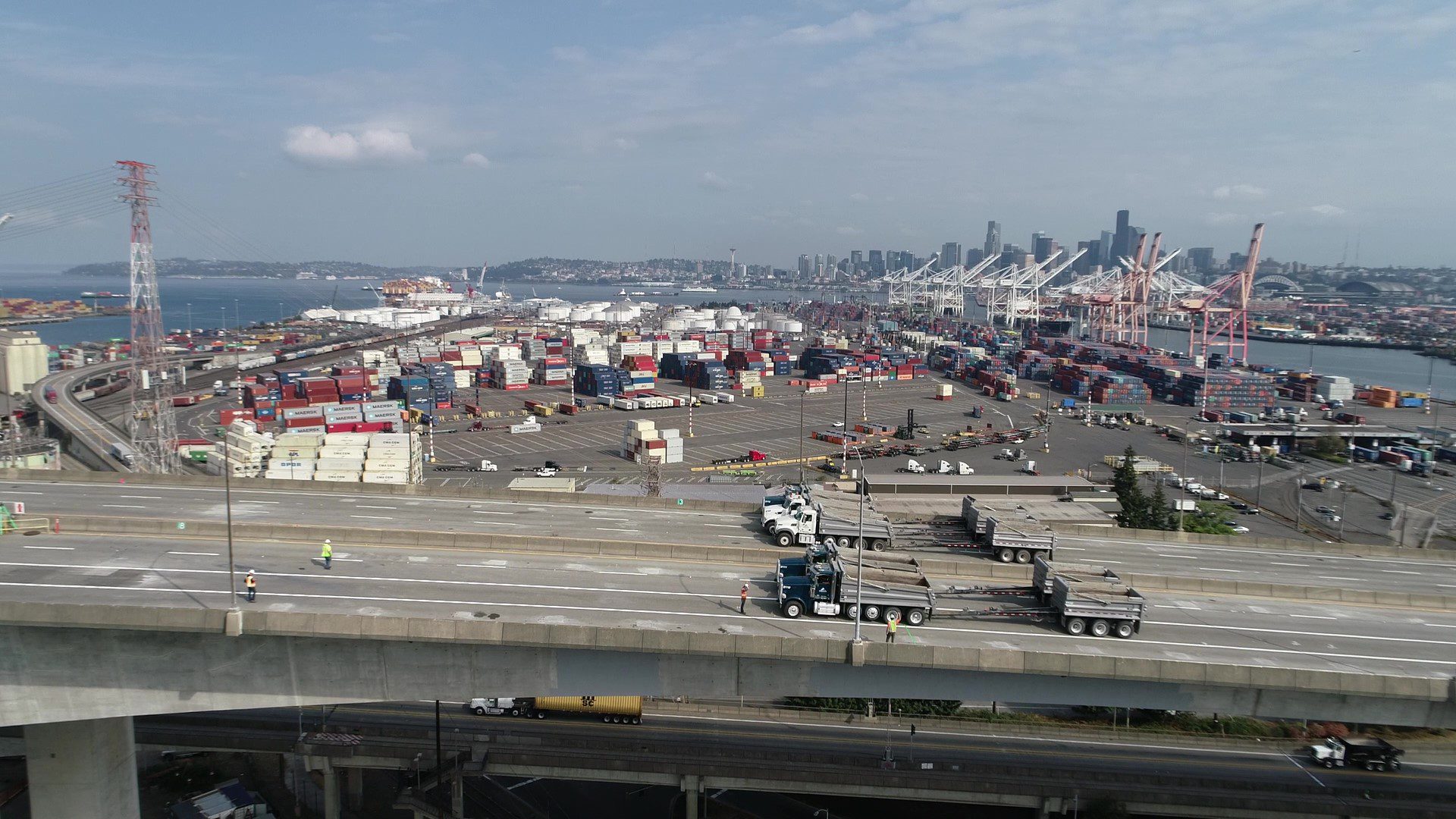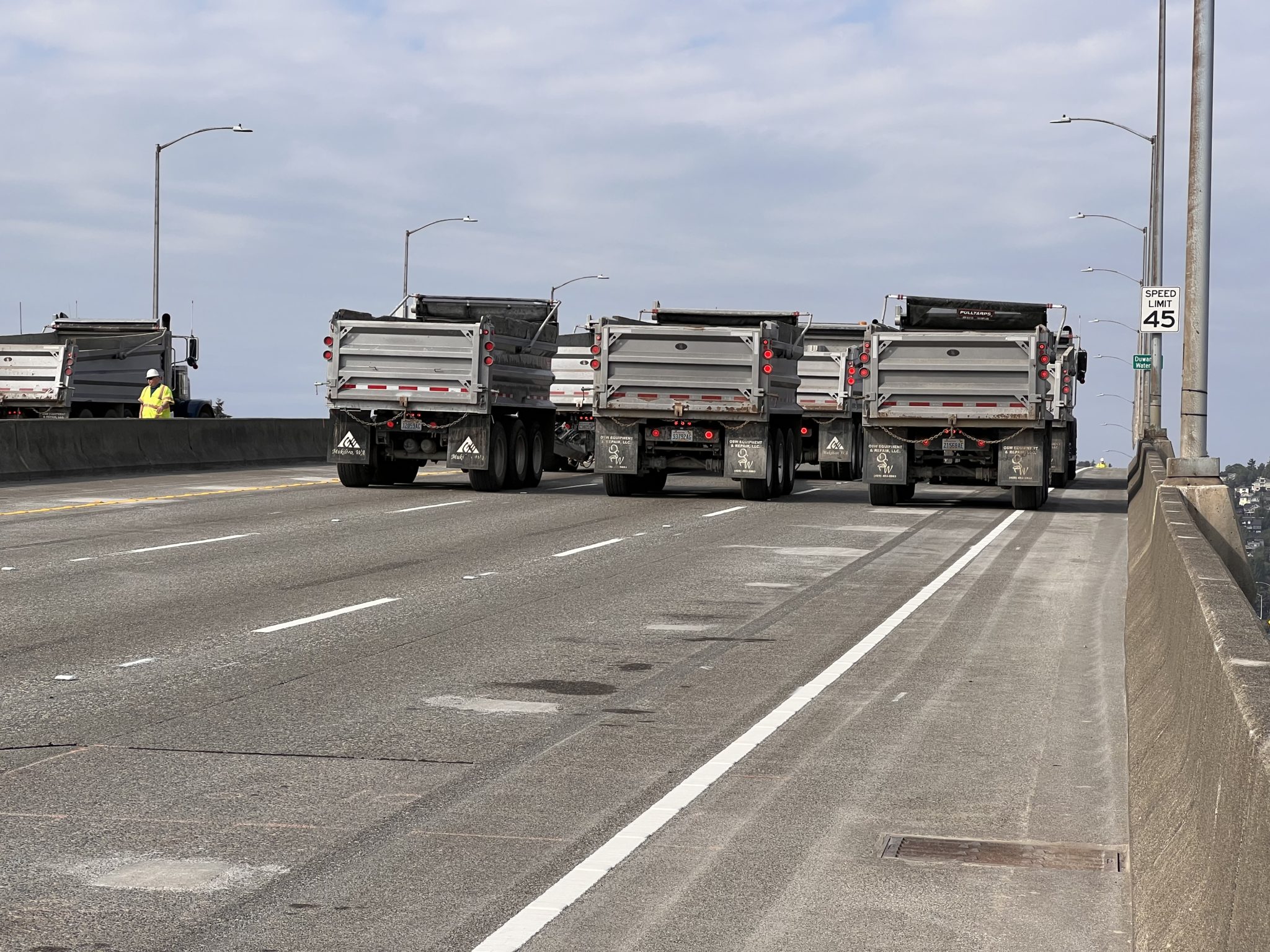 View of trucks getting into position for load testing on the West Seattle Bridge’s eastern span, looking north toward the Port of Seattle and downtown. Photo: SDOT.
View of trucks getting into position for load testing on the West Seattle Bridge’s eastern span, looking north toward the Port of Seattle and downtown. Photo: SDOT. This week, we completed our load testing process on the West Seattle Bridge, bringing us another step closer to reopening the bridge to the public in just 4 days! This blog post highlights the ways we continue to frequently monitor, inspect, and test the bridge to ensure it stays safely in service for years to come.
Monitoring
After the West Seattle Bridge closed in 2020, we installed a new intelligent monitoring system and embedded sensors into all three bridge spans – west, central, and east – so we can identify any movement or crack growth, 24/7.
Engineers designing the repairs determined the expected and acceptable levels of bridge movement recorded by the system, and to date, the bridge has responded as expected including during major heatwaves and freezing winter storms.
Inspections
We also complete regular visual inspections of the bridge, including developing a comprehensive map of all the cracks observed prior to the bridge closure, to confirm there is no additional growth.
Once the bridge reopens, we will continue with a robust monitoring and inspection schedule in addition to the data readouts from the 24/7 intelligent monitoring system.
During inspections, crews will assess the condition of all concrete surfaces, anchors, and previous cracks. New inspection platforms have been installed in the bridge to assist with visual crack inspections.
As the traveling public returns to the West Seattle Bridge, it should look largely the same as it did before the 2020 closure, except for a larger westbound shoulder area. The addition of a larger shoulder allows bridge inspections to happen without closing a lane, helping to reduce future traffic impacts.
Load testing
The biggest load the bridge supports is the weight of the structure itself. The added weight of cars, trucks, and buses is comparatively smaller, at about 20 percent of the total load. When we conduct live load testing on the bridge, we account for that traffic weight.
The load testing consists of six different load scenarios with trucks weighing 80,000 pounds each. Up to 12 trucks were strategically placed on the bridge at one time to create a variety of traffic load scenarios.
During each scenario, the monitoring system sensors and temporary sensors placed for load testing tracked whether the bridge was responding as expected.
